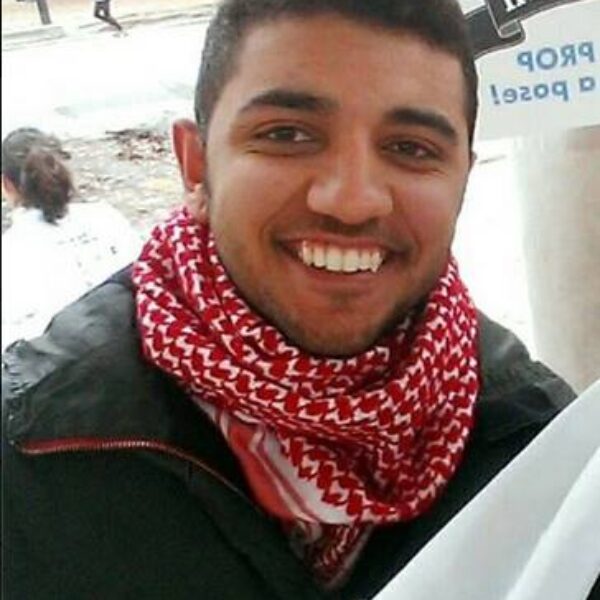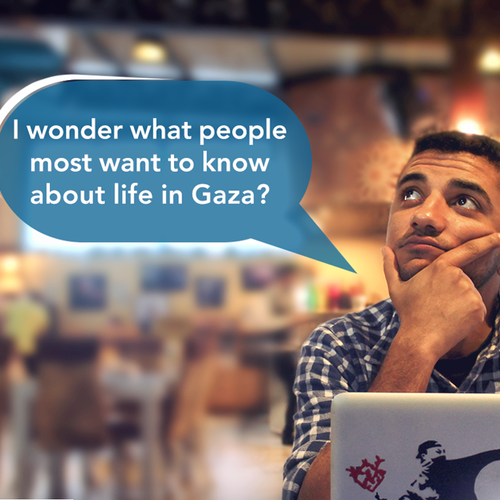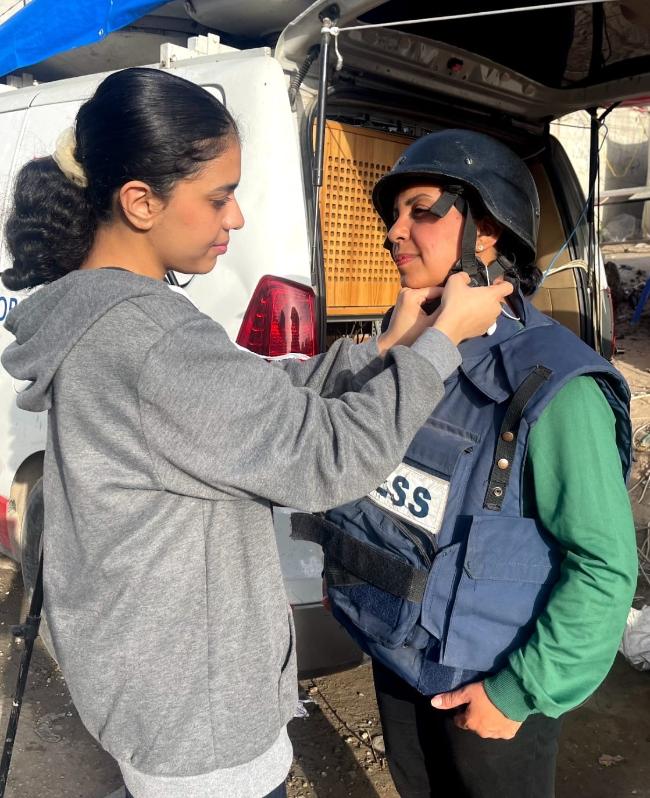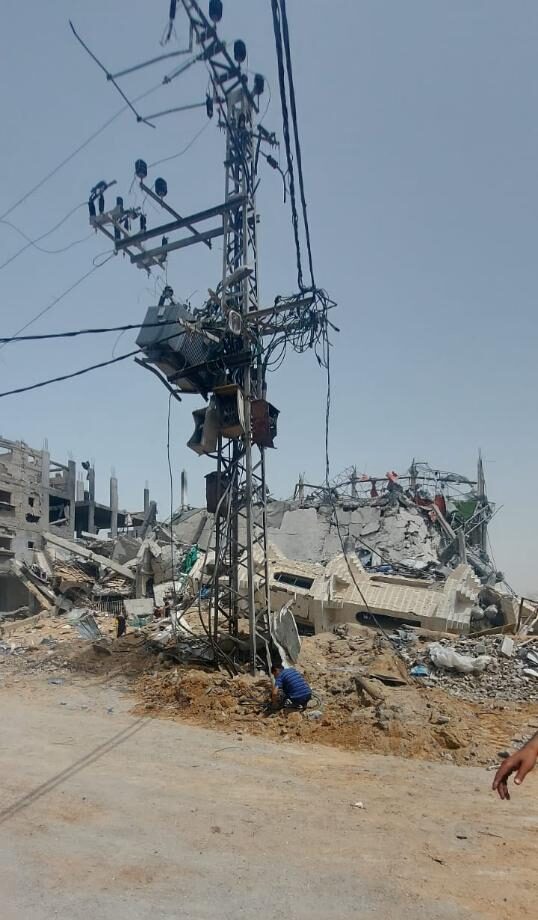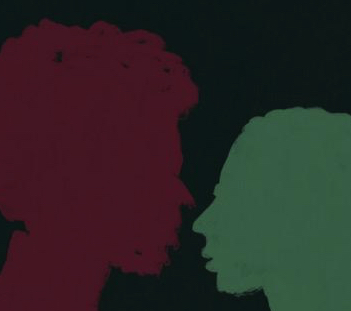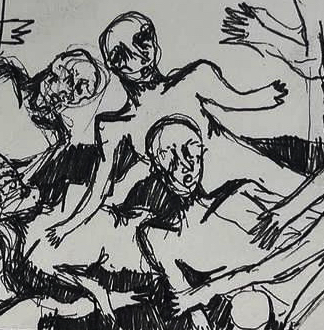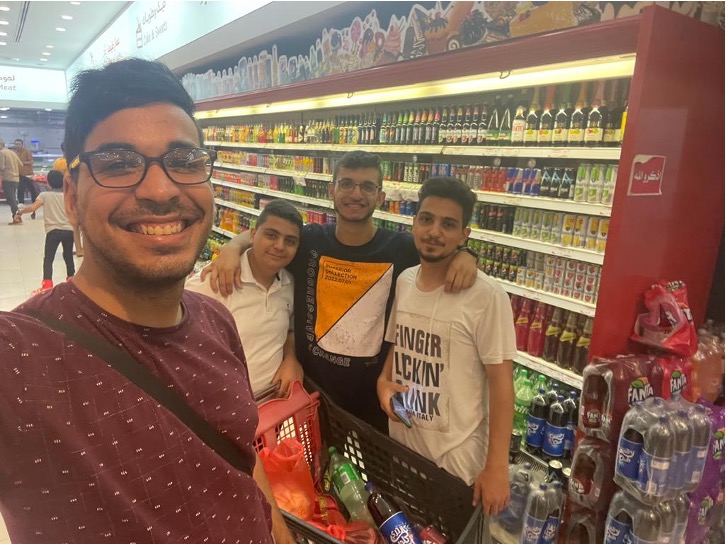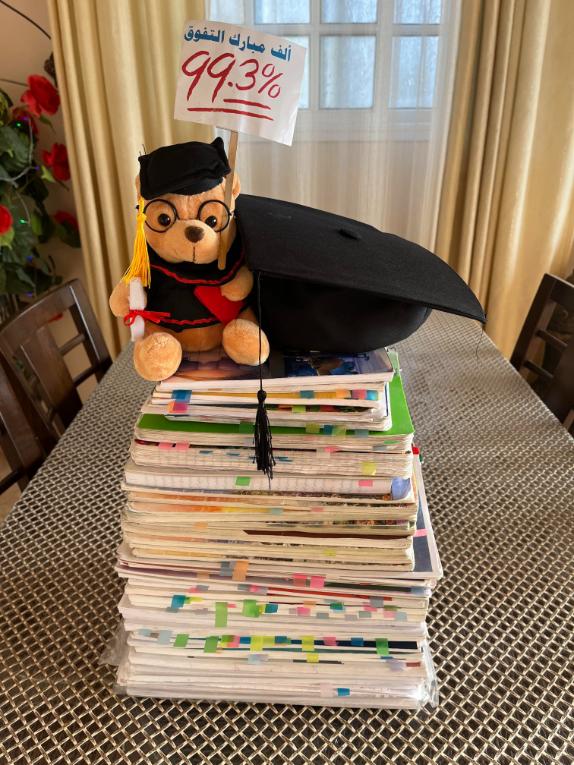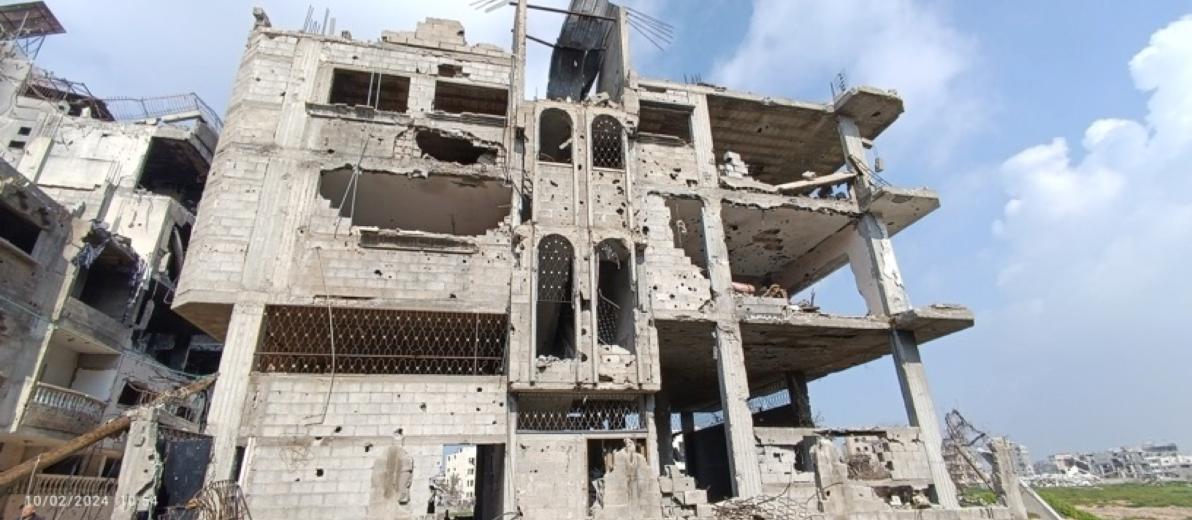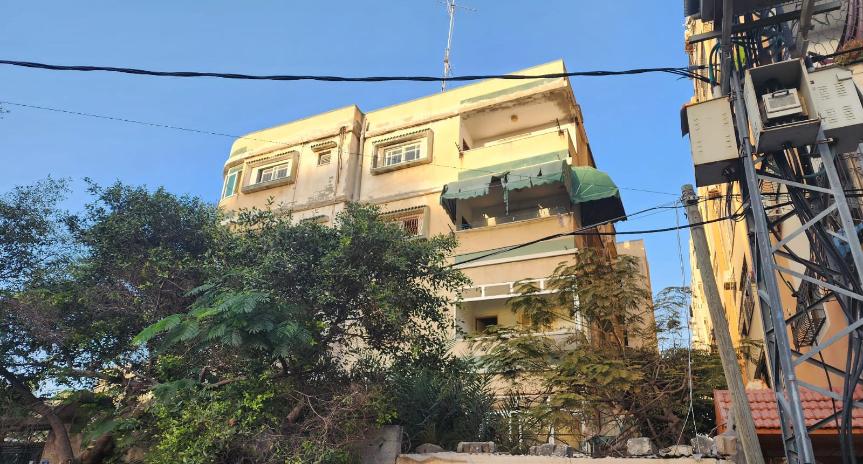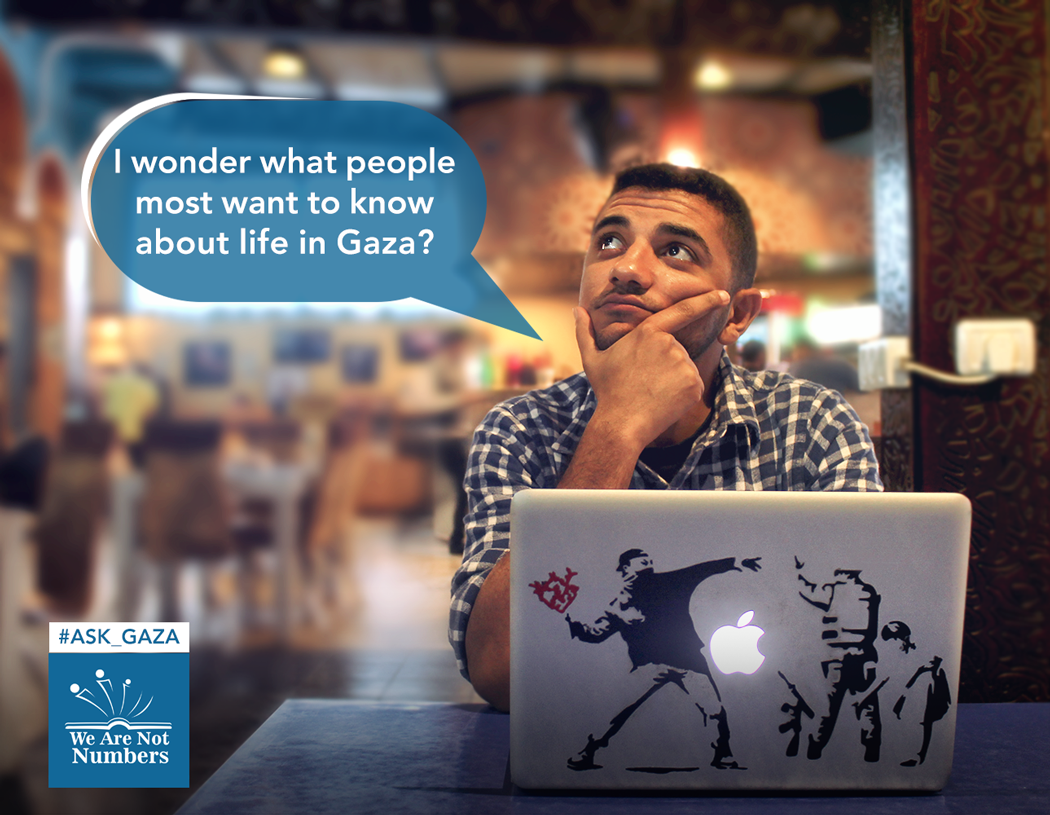
We recently asked our readers, on Facebook and Twitter, what questions they have about Gaza. Here is what you asked, and our answers:
1) What does a typical day look like for someone living in Gaza?
A typical day differs from one person to another. However, there are some characteristics common to the days of most people living in Gaza. The biggest one is routine. Every day is like the day before and the day after. Besides studying (if you are a student) and work (if you are lucky to have a job), there isn’t much to do in Gaza, except going to the beach, hanging out in coffee shops and chatting on Facebook.
The good side of that, we’re told by internationals, is that we talk to each other a lot more, visiting across generations around the meal table and over coffee. The down side is a lot of sheer boredom.
The second common characteristic of our days is the search for electricity. The availability of electricity varies from hours a day to eight. Everyone in Gaza schedules their lives around the availability of electricity. Those who do freelance work from home, for example, say they can have no set sleeping schedule. If the electricity goes back on at midnight, they wake up and work until the power goes off again. If they need to work during the day when the power is off, they go to a coffee shop that has a generator. Housework also revolves around electricity. Want to do laundry? You need to wait until 10 p.m. when the power is back on. Want pressed clothes for the next morning? You might need to do that before heading to bed because you can’t count on having electricity. Another thing to do before heading to bed is charge your phone.
2) How is clean water obtained?
More than 90 percent of water used by households is drawn from the coastal aquifer and is undrinkable due to nitrate and chloride contamination due to over-extraction. Only a quarter of wells in Gaza meet World Health Organisation safety standards. This water is only used for showers and laundry, resulting in stiff clothes and oily skin and hair. (And even then, about 40 percent of the population receive water for only five to eight hours once every three days.)
Thus, Gaza has a number of desalination and purification plants, which provide filtered water for drinking and cooking. We buy this purified water from independent water distributors, who drive water-tank trucks from one neighborhood to another. Each cubic meter of desalinated water costs 25 to 30 shekels (US$6.50 to $7.80), compared to 1 to 3 shekels from the public (aqifier) water system.
3) Are the hospitals missing vital equipment?
According to the Ministry of Health, a severe shortage of medicine and medical supplies threatens the health of one-third of patients in Gaza. It reported in August 2015 that “the shortage is at 32 percent for medicines and 38 percent for medical supplies, which is equivalent to 154 different types of medicines and 342 types of medical disposables.”
The reasons for this severe shortage are several: a) the Israeli blockade imposed on Gaza since 2007, which prevents hospitals and local factories (which could otherwise manufacture drugs and equipment themselves) from receiving necessary materials; b) repeated Israeli assaults on Gaza, which damage or destroy those factories; c) the refusal of the Egyptian government to let most relief convoys into Gaza; and c) the failure of the government in the West Bank to transfer to Gaza its share of donations from international parties (it had earlier agreed to send 40% of this supply to the Gaza Strip; however, only around 5-7 percent actually reaches the Strip.
In part as a result, the majority of patients in Gaza do not and cannot receive appropriate medical care. More than 1,000 patients are referred monthly for specialized care outside the Gaza Strip, but their access to East Jerusalem and the West Bank hospitals, and to Israel and Jordan, is restricted by the Israeli permit system.
4) How much does a two-bedroom apartment cost there?
Depending on the location, the cost to buy a two-bedroom unit ranges from $25,000 to $45,000. Rent costs somewhere between $100 to $200 a month. (Most Gazan families own their living spaces, except for the many who are still displaced by past wars and newly married couples, who either live in an extended family home or start out by renting.)
5) How are Gazans documented? ID-cards, passports? Who delivers them? What is the name of the country written on it?
Israel completely controls the Palestinian population registry in the Gaza Strip and the West Bank. While the Palestinian Authority has its own copy of the registry, any changes must be approved by Israel. Changes are required for the registration of newborns, deaths, address changes, marriages and divorces. This is how Israel completely controls the lives of Palestinians and their freedom of movement.
Note that when Palestinians turn 16, they are required to register for an ID card. The information on the card is written in both Arabic and Hebrew. The name of the country is listed as “the Palestinian Authority.” We apply to the Palestinian Interior Ministry, which then sends the applications to Israel. Once your ID card is ready, you pick it up from the same place. If you marry, your ID card must be renewed.
6) What do you think about at 3 in the morning?
When will the power come back on again?????
7) How big is Gaza?
The area of the Gaza Strip is 365 square kilometers (141 square miles)–about twice the size of Washington, DC. (Yet, if you doubled the population of DC, it still would be short about 500,000 people to match Gaza.) So it is a small and very crowded place.
8) How many people actually go across the Rafah border in 2015, compared to how many tried?
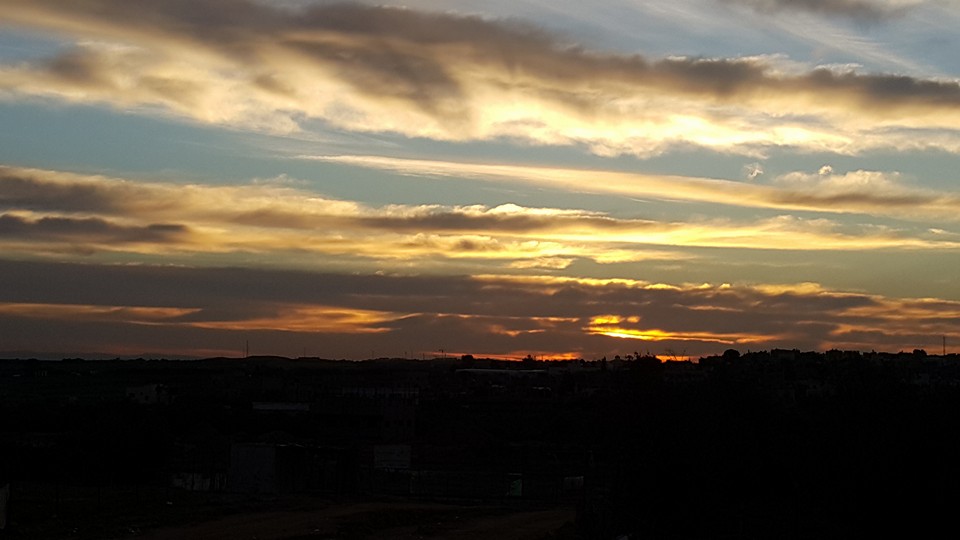
Gisha, an organization that monitors traffic in and out of Gaza, reported that only 28,750 people were able to cross into or out of Egypt in 2015 during the 32 days the border was open. There are no totals for how many Palestinians wanted or tried to leave the Strip via Egypt; however, the UN has estimated that there are at least 30,000 Palestinians who are registered as needing to leave via Egypt for humanitarian (mostly medical) reasons. In 2005, the average number of people crossing the Egyptian border through the Rafah crossing was around 40,000 per month.
9) How do you eat? Where do you get your food?
Unlike the common stereotype, Gaza is not like famine-stricken countries. It is true that 49 percent of our residents are food-insecure, which means they are dependent in part on food parcels from the UN and other international NGOs and/or ration their food. However, we have plenty of supermarkets, produce vendors and restaurants here. The unfortunate fact, however, is that many of our affordably priced foods come from Israel (we are a captive market)–making BDS very difficult!
10) How can art help people survive the occupation?
From one of our artist members, Malak Mattar: Although I paint, art is not only painting; art is everything we see with our eyes. We cannot change the world using art. However, art changes our perspective of the world. When Israel calls us terrorists, we sing, paint and dance, and this deflects all of their lies. Art brings peace to our mind.
11) How easy is it to interact with Palestinians in the West Bank? Vice versa?
Palestinians in the Gaza Strip cannot travel to the West Bank, unless they have special permits from Israel. Not only are permits not easy to come by, but Israel will not let you know about your permit status until a day before or the day of your arranged travel date.
12) Do newlyweds take a “honeymoon,” since they cannot travel?
A honeymoon to a newly married couple in Gaza is going out of the house to any restaurant or to the sea!
13) How do our brothers and sisters keep their mental strength against the constant bullying and killings of the cowardly occupiers? (How do you stand it?)
This differs from one person to another. Some people rely on spirituality and prayer, others try to keep themselves busy with hobbies, such as art, photography and writing. Connecting with internationals via social media helps too, so we feel less isolated. And…this is the importance of We Are Not Numbers! Unfortunately, however, some people, especially youth, resort to painkiller drugs, such as tramadol, as a coping mechanism and a means of escape.
14) How may I help?
Many organizations are providing emergency relief and psychosocial support for children, but what is needed just as much, and is largely neglected, is emotional, creative and other support for young adults, who make up more than 50 percent of the Gaza population. We hope you will choose to help We Are Not Numbers not only keep on going but GROW, by donating and sharing our stories. Please watch for a major fundraising campaign we are launching and help us spread the word!
Posted April 21, 2016

